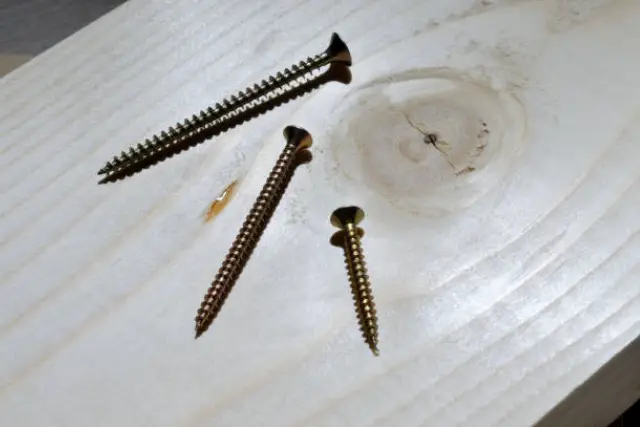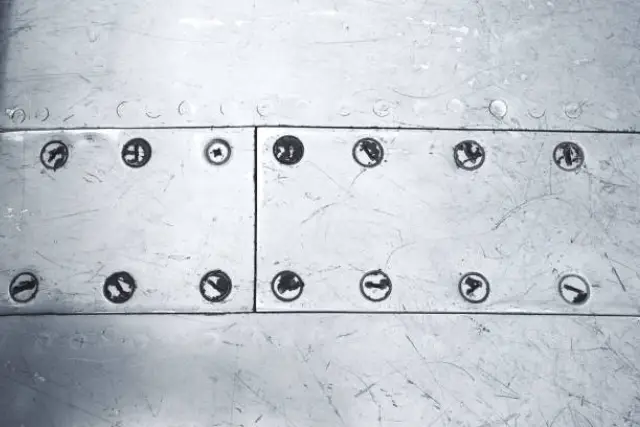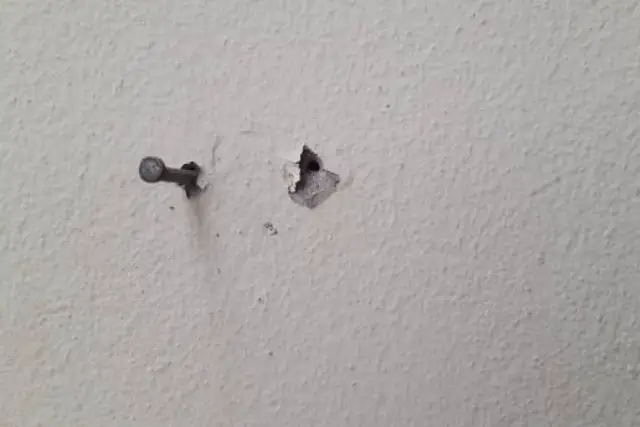Preface: What Causes Screw Holes to Strip?
Screw holes which have become stripped represent a frequent challenge that affects both amateur and professional woodworkers and metalworkers. The threads in the receiving material become damaged which results in ineffective screw grip. Three main factors contribute to stripped screw holes: overzealous installation force and weak materials and poor screw quality. When a screw fails to catch it means the hole has become stripped. This article presents a detailed guide for fixing stripped screw holes in wood and metal materials while providing DIY solutions to restore functionality and stop additional problems from occurring.

Understanding the Basics of Screw Hole Repair
Now, before I spill the beans on how to fix stripped screw holes, you gotta understand a bit about how the whole shebang works. So roll up your sleeves, and let’s dive right in.
Differences in Fixing Wood vs. Metal Screw Holes
To fix stripped screw holes one must understand the basic ways wood and metal materials react differently to this problem. The stripping of screw holes in wood occurs when wood fibers that served as screw grip deteriorate and tear apart. The natural composition of wood along with its dimensional changes caused by environmental elements such as temperature and humidity leads to this process. The compromised fibers force the screw to lose its holding power so new methods must establish secure points within the unharmed wood.
The main cause of stripped screw holes in metal surfaces stems from natural deterioration or damage of the original threads embedded in the metal material. Metal lacks the ability of wood to naturally repair itself or substantially modify its structure when encountering minor damage. The treatment of metal threads that become stripped requires either using a wider screw to generate new threads or implementing methods to repair or replace the broken threads through hole rethreading or threaded insert installation.
| Material | Cause of Stripping | General Solution Direction |
|---|---|---|
| Wood | Deterioration and tearing apart of wood fibers due to stress, soft material, and dimensional changes from environment. | Establish new secure points for the screw within the intact surrounding wood. |
| Metal | Natural deterioration or damage of the original threads embedded in the metal material. | Utilize a wider screw to create new threads or repair/replace the damaged existing threads. |
Tools and Materials Needed for Repair
Before you dive in, make sure your toolbox is ready. You’ll need the basics: a hammer, a screwdriver, and maybe a drill. For wood, have some wood glue and maybe some plastic anchors or hinge screws on hand. They can help bridge the gap where the original wood has failed. Heading to your local hardware store can be a wise move; they’ll likely have everything you need.
Tip: When working with these tools, always prioritize safety. Wear gloves and protect your eyes. These simple steps can prevent accidents.
Now, with these basics in mind, let’s move on to actually fixing those pesky, stripped screw holes. It’s all about choosing the right approach for the material and the problem at hand.
Fixing Stripped Screw Holes in Wood
Wood may be stubborn, but it ain’t as hard-headed as metal. Got more tricks under my sleeve for this one. How to fix stripped screw holes in wood is easier than you might think! Here are a few methods:
Method 1: Using a Longer Screw
The easiest way to fix a stripped wood screw hole is by simply swapping the old screw for a bigger one. Maybe find one that’s got a larger diameter or longer—perhaps a bit of both. This works well since the wood will have enough material where the stripped hole is to bite into the new, larger screw. But, mind you, this is a slippery slope if you’re not careful. Make sure you don’t create new issues by cracking the wood or something equally silly.
Method 2: Filling with Matchsticks or Toothpicks
Let’s get some firewood now, shall we? Nah, I’m just pullin’ your leg. Toothpicks or matchsticks come in handy here. Apply some good ol’ wood glue to them and jam them into the stripped hole. Let the glue set, then saw off any excess sticking out. You’ve basically created new threads for your screw to tighten into. Easy peasy, lemon squeezy, ain’t it?
Method 3: Utilizing Plastic or Wood Anchors
Here’s where we get a bit fancy. Plastic anchors can sometimes be a real lifesaver. They work by expanding within the hole when a screw is inserted, providing a good grip for your screw. This should suit your lightweight applications pretty neatly.
Method 4: Employing Wood Strips
As the saying goes, ‘fight fire with fire’, let’s fight wood with wood here. Cut small strips of wood (spruce or other hardwood), apply wood glue to them, and hammer them into the stripped hole. Once dry, cut off the extra wood protruding out, and drill a new pilot hole. Voila! You’ve got a new hole for your screw.
Method 5: Applying Auto Body Filler
Alright, granted, this method is a bit more labor-intensive. But desperate times ask for desperate measures, right? Auto body filler, also known as Bondo, can be used to fill the stripped hole. Once it sets, you can then drill a new hole. Just be sure to use a release agent on the screw if you test fit it before the filler sets fully; otherwise, you might just glue that screw in place!

| Method | Description | Advantages | Possible Drawbacks | Tools Needed |
|---|---|---|---|---|
| Using a Longer Screw | Replace the old screw with one that is larger in diameter or longer. | Simple and quick solution. | Risk of cracking the wood if not done carefully. | Screwdriver (appropriate type and size) |
| Filling with Matchsticks or Toothpicks | Insert matchsticks or toothpicks coated with wood glue into the hole. | Creates new threads for the screw to grip. | Not suitable for heavy-duty applications. | Wood glue, Matchsticks or toothpicks, Saw (or knife) |
| Utilizing Plastic or Wood Anchors | Use plastic anchors that expand in the hole for a better grip. | Good for lightweight applications. | Might not hold up in heavier or high-stress situations. | Hammer, Screwdriver (appropriate type and size) |
| Employing Wood Strips | Insert strips of wood glued into the hole. | Provides a solid, natural wood base for the screw. | More time-consuming and requires precise cutting. | Wood glue, Small strips of wood, Hammer, Knife or chisel, Drill, Pilot drill bit |
| Applying Auto Body Filler | Fill the hole with an auto body filler and drill a new hole once set. | Effective for larger holes. | Labor-intensive and requires careful handling to avoid gluing the screw. | Auto body filler (Bondo), Release agent (optional), Mixing stick, Drill, Pilot drill bit |
Remember, each method has its own place. What’ll work best depends on your specific situation, the size of the stripped screw hole, and the materials at hand.
Fixing Stripped Screw Holes in Metal
Ah, metal. It might give you a tougher time than wood, but don’t you worry, I’ve rolled up my sleeves and fixed more stripped screw holes in metal than I can count. metal hole filler can often be part of the solution, especially when needing a reliable hold. how to fix stripped screw holes in metal isn’t as complicated as it seems if you’ve got the right techniques.

Method 1: Replacing with Wider Diameter Screws
Much like with wood, a larger screw could be the answer to your stripped-hole woes. Larger, as in a wider diameter. This is because the original threads on the stripped hole are no longer holding, so a larger screw can cut new threads. But remember, everything should be done in moderation. You don’t want to rush from a stripped hole right into a cracked metal frame.
Method 2: Implementing Screw Repair Kits
Have you heard of screw repair kits? They’re off-the-shelf solutions that can fix stripped screw holes in a jiffy. These wonderful kits usually come with a tap and threaded inserts that match the size of the original screw. With this, you get to keep the same screw size while correcting the stripped hole.
Method 3: Liquid Stripped Thread Repair
Now we’re stepping into more scientific solutions. There are special liquids available—threadlockers, for instance—that are designed to fill the gaps in stripped threads and secure your screws. Just apply the liquid to the screw threads and screw it in. Give it a while to cure, and your screw should be just as tight as a snare drum.
Method 4: Adding Threaded Metal Inserts
This might sound intimidating, but trust me when I say it’s not. Adding a threaded metal insert into a stripped hole can provide new threads for your screw to hold onto. Essentially, you’re adding a threaded metal sleeve to your hole. This can be extra handy when you deal with heavy-duty applications or need that extra bit of security.
Method 5: Using a Tap-and-Die Set
Alright, this is for those who don’t mind getting their hands a bit dirty. A tap-and-die set can be used to rethread the hole. You essentially create new threads that match your screw. This method requires a steady hand and a good eye, but boy, it’s satisfying when you get it right.
| Method | Description | Advantages | Possible Drawbacks | Tools Needed |
|---|---|---|---|---|
| Replacing with Wider Diameter Screws | Use screws with a larger diameter to create new threads in the stripped hole. | Simple solution; no special tools required. | May not be suitable for all metals; risk of further damage if overdone. | Screwdriver (appropriate type and size) |
| Implementing Screw Repair Kits | Use kits with a tap and threaded inserts matching the original screw size. | Preserves the original screw size; professional finish. | Requires purchasing a kit; some skill needed for proper installation. | Screw repair kit (including tap and inserts), Tap handle, Drill (optional) |
| Liquid Stripped Thread Repair | Apply a liquid thread locker to fill gaps and secure screws. | Easy to apply; strong hold once cured. | Requires time for curing; not suitable for very large holes. | Liquid thread repair/threadlocker |
| Adding Threaded Metal Inserts | Install a threaded metal sleeve in the stripped hole. | Provides strong new threads; ideal for heavy-duty use. | Requires precision in installation; more labor-intensive. | Drill, Drill bits (specific size for the insert), Insertion tool (often included in the kit) |
| Using a Tap-and-Die Set | Rethread the hole to match a new screw. | Customizable to various screw sizes; very secure. | Requires skill and proper tools; more time-consuming. | Tap-and-die set, Tap handle, Cutting oil (recommended) |
Pro Tip: Patience is key with metal. If a method doesn’t work the first time, take a breather, reassess, and try another approach.
Tips for Successful Repair

Once you’ve fixed a stripped wood screw hole, it’s crucial to test the strength. Give that door a few swings, or try twisting the handle a bit. This simulates daily use and helps ensure that your repair can stand up to regular wear and tear. If you’ve used any filler material, check if it’s sitting flush with the surface. You don’t want it sticking out like a sore thumb, nor do you want it too recessed, weakening the hold.
After fixing a screw hole, especially on something like a door frame or hinge, it’s not just ‘set it and forget it.’ You need to keep an eye on it. Over time, the same issue might crop up again. Regular checks can save you a lot of hassle. If you notice a screw starting to give way, tighten it up, or maybe even repeat the repair process. It’s all about staying ahead of the game to avoid future problems.
Remember: Regular maintenance is key to longevity. Keep those door hinge screws tight and check them periodically to ensure lasting holding power.
And that, my friends, is how you make sure your repairs not only fix the problem but also stand the test of time.
Secure and Steady: The Final Word on Screw Hole Repairs
In concluding our comprehensive discourse on the rehabilitation of denuded screw apertures in both woodworking and metal framing contexts, it becomes evident that this task transcends mere repair. It embodies a sophisticated synergy of material comprehension, adept application of refined techniques, and a steadfast commitment to ensuring enduring holding power.
For avid DIY aficionados, it is imperative to prioritize safety. In instances of uncertainty, seeking the counsel of a seasoned professional is advised. An insider’s recommendation emphasizes the pivotal role of screw selection. Electing screws from esteemed manufacturers not only bolsters the connection in both timber and metallic structures but also substantially mitigates the likelihood of subsequent loosening.
Whether learning how to repair stripped screw holes in wood or metal, understanding these principles ensures your projects will be secure and resilient.






